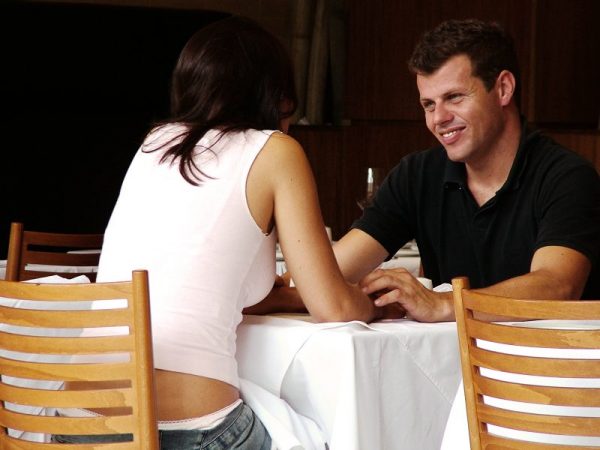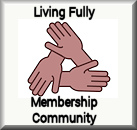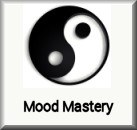I sometimes get couples in my office that have gone a long way down the road towards practicing the predictors of divorce. They are discouraged and maybe one person in the partnership has got their foot out the door. It can seem overwhelming to consider what would need to be done in order to put things back together so that they can connect and be a couple. I want to give you hope today. It is not over until it is over. Slow everything down. There is so much at stake for now and in the future riding on this decision. I like the illustration that John Gottman gives when asked whether these couples can really change and put things back on track. He likens it to sending a rocket to the moon. If you are off by just a minute amount in the trajectory, you will miss the moon. By correcting just a small amount, you will hit the moon. That is why he wrote, “The Seven Principles For Making Marriage Work” (if you have not read it – it would be a good place to start). You do not have to overhaul the whole relationship but just use some correction tools that are meaningful. Sue Johnson’s research shows that you do not have to be perfect in your relationship but you do have to connect enough to have a secure attachment. By this time, you likely have viewed not just the present but have revised the whole relationship history to be negative. You believe you have “tried” everything. You believe your problems are severe – you are a total mismatch. You may experience loneliness. At this point do not try to solve things on your own. Go and see a marriage counsellor. Find a way inside yourself to make this a total necessity in your life to make the changes needed. Anytime we have a circumstance in our lives, we need to see it as an opportunity to upgrade ourselves and make the necessary changes inside of us.
 While you are waiting for professional help, you can get ready by:
While you are waiting for professional help, you can get ready by:
1. Looking at memories that were positive in your relationship. Be willing to see the positive.
2. Talk together about what it has been like for each of you, focussing on yourself in the telling (not blaming) and focussing on the other in the listening (empathetic understanding). Share your heart. This is not for the feint – it takes courage. Find it within. It is there.
3. Apologize for what you are able to apologize for.
4. Commit to your partner to do what it takes to make things work between you. Not just for today but a new way of being together.
5. Read Chapman’s book, The 5 Love Languages, and start practicing this to bring the walls down.
6. Read Sue Johnson’s book, “Hold Me Tight” or “Love Sense”. This helps you to know what is at stake for you and helps to give you permission to want more from your relationship.
7. Read John Gottman’s book, “Seven Principles for Making Marriage Work”
Attend your marriage Counselling with an open heart and mind and do the changes necessary to course correct. Part of being a healthy human being is being able to pivot in life when necessary without ditching everything. Go forth and be wonderful today!
secure attachment Posts
Overwhelmed by the Challeges in Your Relationship?
Partners with a Dismissing Emotions Style
I see lots of mismatches in emotional attunement between partners in my practice. Without understanding, this mismatch can really get in the way of creating a secure attachment relationship together. Many partnerships have one partner that is intolerant of negative emotions or is emotion dismissive. When their partner is upset, they can feel impatient and want their partner to “get over it”. They may offer constructive criticism or a well meaning fix it solution when their partner has a negative emotion about a life event. They would prefer that their partner put on a happy face or lighten up. If this is you and you were brought up in a household that could not manage negative emotions, it is difficult to change this way of being. However, the rewards of making a change in this area of your relationship are great. Some of the benefits are greater connection and intimacy, your partner does not have to escalate their emotions to get noticed (did your partner ever say to you – I feel like I could die and you would not pay attention to me?), you would come to know your partner more deeply, providing the opportunity to love more deeply, you would create an opportunity to problem solve as a team, and many more benefits. So how do you make this change?
1. Practice noticing a change in emotion for you and your partner.
2. Approach your partner with an attitude of curiosity. I notice a change in you – Is something going on for you?
3. Listen for understanding only. What does this emotion indicate for your partner? Why is it there and what does it mean for them?
4. Reflect the emotions you hear and the reason for them to your partner. What if you are wrong about the emotion you reflect? Your partner will be able to correct you, thereby helping you and them to understand what is going on for them. Keep reflecting until your partner feels fully understood. You will find their emotional intensity lowers as they feel more understood by you.
5. If the issue is about the relationship, ask your partner to tell you what they need from you (in positive terms). Continue to listen non defensively and with understanding. If the issue is something outside of the relationship, your partner may want you to help them problem solve the issue or they may not. Perhaps understanding was exactly what they needed. Do not attempt to problem solve unless your partner asks for it. Don’t even let it sneak in!
Find a way to have your styles fit together and work towards a more secure attachment. This effort is hugely worth it and you 
can take this skill with you to connect with
your kids and your coworkers, when appropriate.
Practice it this week. Keep practicing!
Go forth and be wonderful!
Bids for Connection Re-Visited
Bids for connection are so important for couples
to understand and attend to in their relationship. I have written about this before and it is well described in John Gottman’s book, “the Relationship Cure”. I am drawn to write about this again for 2 reasons. One is not just because of the importance of the habit but the amount that I notice couples making disconnections in this regard. Second is the newer research by John Gottman’s student who sets out a hierarchy of bids that I think are also important to know. First, let’s review what bids for connection are. As people who want to connect, we are continuously making bids for connection that are actually “trust tests”, according to Gottman. We respond to these bids either by turning towards our partner, thereby making connection, or turning away from our partner by ignoring, or against our partners by anger or other negative responses, thereby losing the connection. This loss of connection has great meaning in the overall status of the health of our human need for secure attachment as well as the health of our everyday lives together. Apparently, Janice Driver, using the Gottman study research (remember the love labs that gave us the great information found in the book, Seven Principles for Making Marriage Work?) found that couples who had divorced 6 years after their marriage had turned towards each other 33% of the time versus those who were not divorced after 6 years turned towards each other 86% of the time. A big difference and such crucial information if you care about your relationship. So how does the hierarchy of bids work? At the bottom of the hierarchy are the little trust tests, a small bid for attention, for instance. They are not so costly for us and just need a nod, a touch or some kind of acknowledgement. Another couple of examples are a bid for help at 3 and sharing events of the day is an 8 on the scale. Halfway is problem solving at a 10. The last 4 up to 20 (the end of the scale) are the ones that couples can have difficulties with. They are intimate conversation, emotional support, understanding (compassion, empathy) and sexual intimacy. As couples are successful at lower levels where there is less risk, they are willing to move higher up the ladder to more vulnerability where the benefits get bigger. Another huge benefit was found by another student (Kim Ryan) who studied conflict and bids for connection. It was found that changing to more turning towards causes positive affect during conflict (the ability to have humor and affection – right in the middle of conflict!). This kind of positive affect in turn causes stability in relationship. I say learning the skill of meeting your partner’s bids for connection is worth doing! Go forth and Be Wonderful in your Relationship!
MENU
Links
Categories
Archives
Good Reads





